#Eastern Zhou Dynasty
Text
The Zhou Dynasty (1046-256 BCE) was among the most culturally significant of the early Chinese dynasties and the longest lasting of any in China's history, divided into two periods: Western Zhou (1046-771 BCE) and Eastern Zhou (771-256 BCE). It followed the Shang Dynasty (c. 1600-1046 BCE), and preceded the Qin Dynasty (221-206 BCE, pronounced “chin”) which gave China its name.
Among the Shang concepts developed by the Zhou was the Mandate of Heaven – the belief in the monarch and ruling house as divinely appointed – which would inform Chinese politics for centuries afterwards and which the House of Zhou invoked to depose and replace the Shang.
The Western Zhou period saw the rise of decentralized state with a social hierarchy corresponding to European feudalism in which land was owned by a noble, honor-bound to the king who had granted it, and was worked by peasants. Western Zhou fell just before the era known as the Spring and Autumn Period (c. 772-476 BCE), named for the state chronicles of the time (the Spring and Autumn Annals) and notable for its advances in music, poetry, and philosophy, especially the development of the Confucian, Taoist, Mohist, and Legalist schools of thought.
Eastern Zhou moved the capital to Luoyang and continued the Western Zhou model but with an ever-increasing breakdown of the imperial Chinese government which resulted in the claim that the Zhou had lost the Mandate of Heaven. The weakness of the king's position gave rise to the chaotic era known as the Warring States Period (c. 481-221 BCE) during which the seven separate states of China fought each other for supremacy. This period ended with the victory of the state of Qin over the others and the establishment of the Qin Dynasty which tried to erase the accomplishments of the Zhou in order to establish its own primacy.
The Zhou Dynasty made significant cultural contributions to agriculture, education, military organization, Chinese literature, music, philosophical schools of thought, and social stratification as well as political and religious innovations. The foundation for many of these developments had been laid by the Shang Dynasty but the form in which they came to be recognized is entirely credited to the Zhou.
The culture they established and maintained for almost 800 years enabled the development of the arts, metallurgy, and some of the most famous names in Chinese philosophy, among them Confucius, Mencius, Mo Ti, Lao-Tzu, and Sun-Tzu all of whom lived and wrote during the period known as the time of the Hundred Schools of Thought during which individual philosophers established their own schools. The contributions of the Zhou Dynasty provided the foundation for the development of Chinese culture by those that followed, most notably the Han Dynasty (202 BCE-220 CE) which would fully recognize the value of the Zhou Dynasty's contributions.
#studyblr#history#military history#politics#chinese politics#music#poetry#philosophy#sociology#metallurgy#shang dynasty#zhou dynasty#western zhou dynasty#eastern zhou dynasty#spring and autumn period#warring states period#qin dynasty#han dynasty#china#confucius#mencius#mozi#laozi#sun tzu#confucianism#taoism#mohism#legalism#mandate of heaven
0 notes
Text
Advisors Alliance Mini Encyclopedia Translation Post 19: Dogwood
The Advisors Alliance 大军师司马懿之军师联盟 is a 2017 two-part Chinese TV series depicting the life of Sima Yi, a government official and military strategist who lived during the late Eastern Han Dynasty 东汉 (25 CE - 220 CE) and the Three Kingdoms Period 三国時代 (220 CE - 280 CE). [Wikipedia of the show’s first season]
The second part is titled Growling Tiger Roaring Dragon 虎啸龙吟 and keeps following Sima Yi’s life as he matures and becomes wiser [Link to the show’s second season’s MyDramaList page].
The Weibo account [Link] of the show made a series of posts in the style of small encyclopedias explaining different historical and cultural facts that where included in the series. The user @moononmyfloor compiled the 50 posts and asked me to translate them. This will be an ongoing series where I will do just that. Although I tried to stay as close as possible to the original text, I had to take some liberties in some posts to get the meaning across better. On the side, I have included extra information from personal research that explains certain things better.
The posts are not in order of the episodes but I will provide the episode and season number to avoid confusion. If there are any mistakes in translation, do let me know in the comments or privately message me and I will do my best to fix them.
If it is difficult to read the letters, tap or click on the image to expand it. Without more preamble, here you go.


There’s a typo. I meant “Ming Dynasty” not “Mind Dynasty”.
Extra information:
Double Ninth Festival, also known as Double Yang Festival and Chongyang Festival, is a Chinese holiday celebrated on the ninth day of the ninth month in the traditional Chinese calendar. It’s called the Double Yang Festival 重阳节 [Trad. 重陽節] because nine, in Chinese culture, was regarded to be a Yang number (6 was Yin). As such, the ninth day of the nine month was considered to have very strong Yang energy and, thus, was auspicious. People celebrated it by climbing high places such as mountains (from there the festival also came to be known as the Height Ascending Festival 登高节), drinking chrysanthemum wine, eating chrysanthemum cakes, appreciating chrysanthemum flowers, wearing dogwood branches on the hair, and visiting the graves of ancestors to leave food, drinks, and gifts. The tradition of climbing mountains likely came from the worship of mountains as ancient Chinese people climbed them to pray and receive blessings from the gods and/or ancestors. The Double Ninth Festival predates the Eastern Han Dynasty.
Like all other traditional Chinese holidays, poets wrote poems dedicated to celebrating the auspicious days. The fragment of the poem that is mentioned at the beginning of the post is one taught to children in China in elementary school. It’s by the Tang poet Wang Wei 王维 and it’s titled 《九月九日忆山东兄弟》 [Trad. 《九月九日憶山東兄弟》]. Below is the poem in both simplified and traditional Chinese. I will leave a translation made by American Poet Witter Bynner below.
Traditional:
獨在異鄉為異客,
每逢佳節倍思親。
遙知兄弟登高處,
遍插茱萸少一人。
Simplified:
独在异乡为异客,
每逢佳节倍思亲。
遥知兄弟登高处,
遍插茱萸少一人。
Translation (On the Mountain Holiday Thinking of my Brothers in Shandong)
All alone in a foreign land,
I am twice as homesick on this day.
When brothers carry dogwood up the mountain,
Each of them a branch -- and my branch missing.
The three sacrificial animals 三牲 changed depending on the dynasty. For instance, nowadays, people associate the three sacrificial animals with chicken, pork, and fish. However, in the time of the Western Zhou Dynasty, people referred to the three sacrificial animals as cow, sheep, and pig. Variations also include chicken, duck (or geese), and fish. Another variation involves five animals instead of three: chicken, duck, pork, fish, and squid. The purpose of animal sacrifice was to ask the gods and ancestors for protection and/or blessings.

Picture showcasing the five animal sacrifices 五牲 of chicken, pork, fish, duck, and squid [image source].
Catalogue (find the rest of the posts):
#chinese culture#chinese history#the advisors alliance#history#food history#food#dogwood#double yang festival#eastern han dynasty#western zhou dynasty#three kingdoms#wang wei#chinese poetry
65 notes
·
View notes
Photo
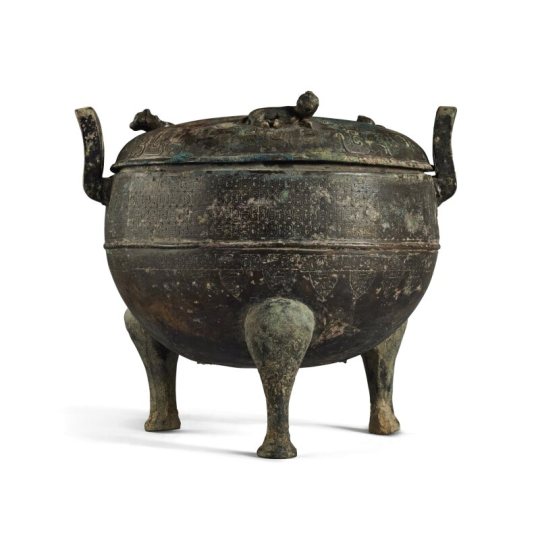




An archaic bronze ritual tripod vessel and cover (Ding)
Eastern Zhou dynasty, Spring and Autumn period
Width 11⅝ in., 29.5 cm.
#An archaic bronze ritual tripod vessel and cover (Ding)#Eastern Zhou dynasty Spring and Autumn period#bronze#bronze vessel#archeology#archeolgst#ancient artifacts#history#history news#ancient history#ancient culture#ancient civilizations#ancient china
23 notes
·
View notes
Photo
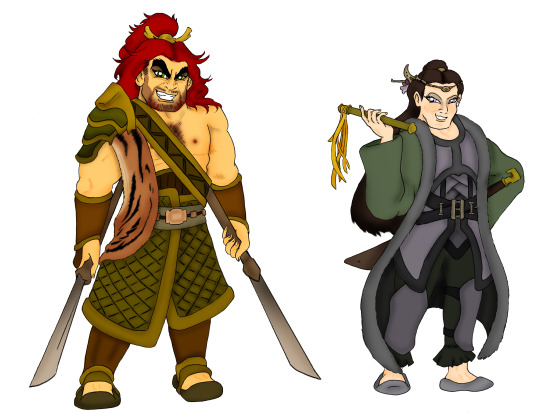
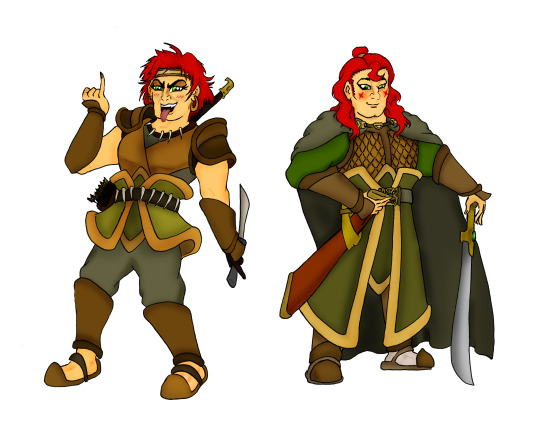
1. Sun Ce and Zhou Yu
2. Sun Shangxiang and Sun Quan
Sun Ce, the eldest son of Sun Jian, fast makes a name for himself as 'The Young Conqueror', leading his father's troops as well as defectors from Yuan Shu's rapidly-failing state to conquer and control the regions south of the Yangtze, carving a kingdom of his own which forms what will become Sun-Wu.
He is aided in this by a peerless strategist of keen wit and great vision who plays a further part aiding his family in what will become the War of the Three Kingdoms.
His name? Zhou Yu
Sun Shangxiang is a rambunctious tomboy who never misses out on a chance to crack skulls and irritate people but who treasures her family above all else.
Sun Quan is a meek, studious young man who prefers to resolve things diplomatically, though is prone to some odd behaviour on occasion.
Through them, the eastern kingdom of Wu forms its foundations.
Bit out-of-proportion on the first image. Not quite sure where but something feels a bit off. Might go over that.
Sun Ce is described as wielding two bronze spears. These are more or less the closest I could design while still being fairly practical, two long-handled blades which he wields with expert dexterity.
Zhou Yu's instrument there is a tasseled sceptre which strategists of the time used as signalling devices similar to the war-fans of samurai warlords.
In case you weren't aware, the raising of the little finger is the Chinese equivalent of flipping the bird. Sun Shangxiang does this a lot.
#Sun Ce#Sun Quan#Sun Shangxiang#Sun Jian#Zhou Yu#Sun Wu#Eastern Wu#Three Kingdoms#Romance of the Three Kingdoms#sanguosha#sangoku#ancient china#Han Dynasty#historical fiction#webcomic#ttoca
1 note
·
View note
Text
[Hanfu · 漢服]China's national Important Cultural Relics Impression Series By Artist @陆曼陀
China Neolithic Period:The Hongshan culture(4700-2900 BC)Relics<玉猪龙/Pig dragon>
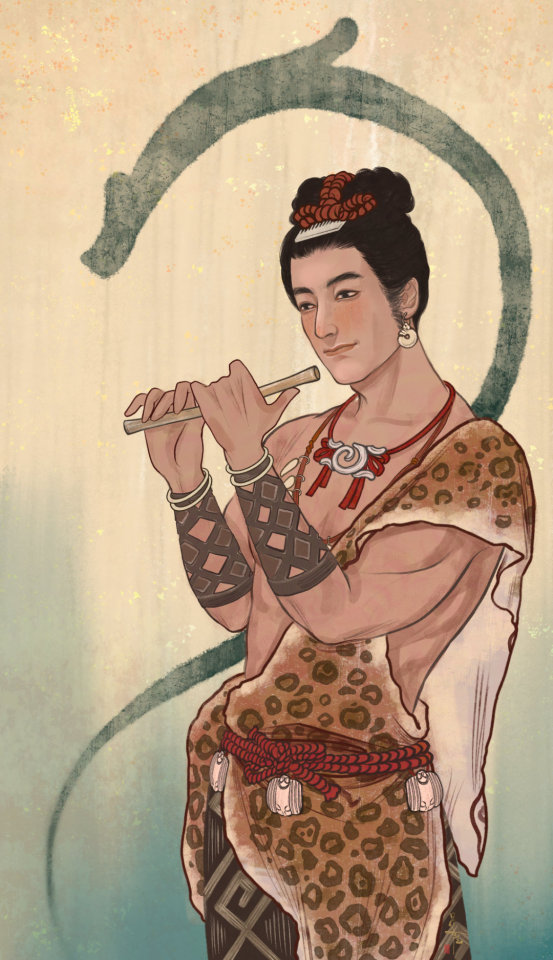

China Shang dynasty / Western Zhou dynasty(1200–800 BC) · Shu state Relics < 太阳神鸟金饰/Golden Sun Bird>

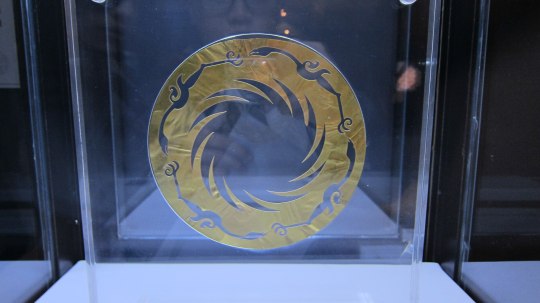
China Western Han Dynasty (202 BC – 9 AD)Artifact Relics<长信宫灯/oil lamp in the shape of a kneeling female servant>


After the lamp is lit, the soot enters the base of the palace lantern through the sleeve to achieve the purpose of cleaning the air.

China Eastern Han Dynasty(25–220 AD)Artifact Relics<铜奔马 or the Galloping Horse Treading on a Flying Swallow (馬踏飛燕)>


China Eastern Han Dynasty(25–220 AD) Artifact Relics<摇钱树/Money tree (myth)>

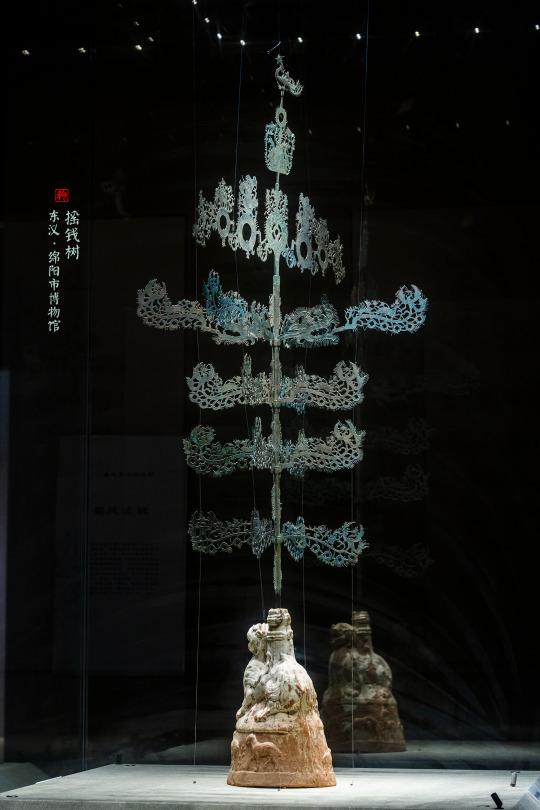
China Tang Dynasty(618–907CE) Artifact Relics<女立俑/Female standing figurine >
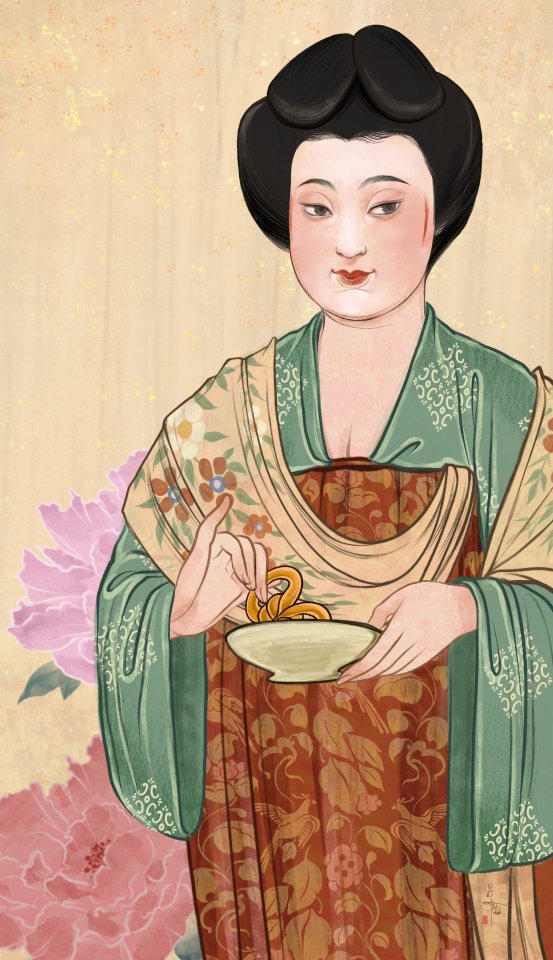
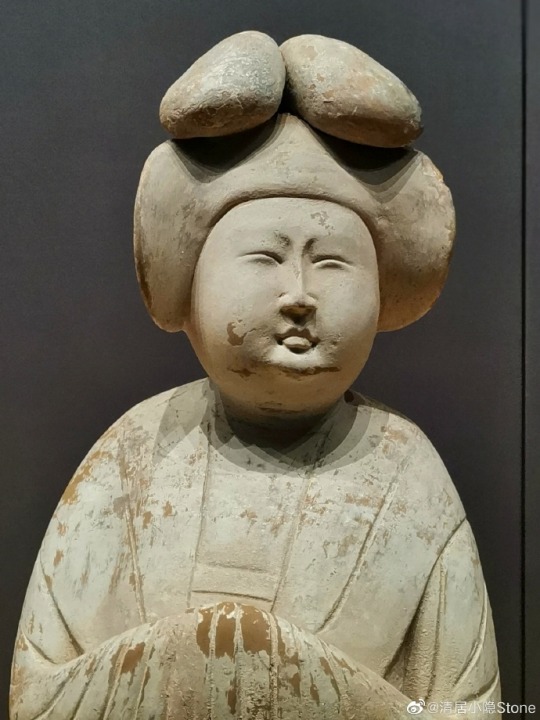
China Song Dynasty (960–1279) Artifact Relics<汝窑天蓝釉刻花鹅颈瓶/Ru kiln sky blue glaze carved gooseneck bottle>
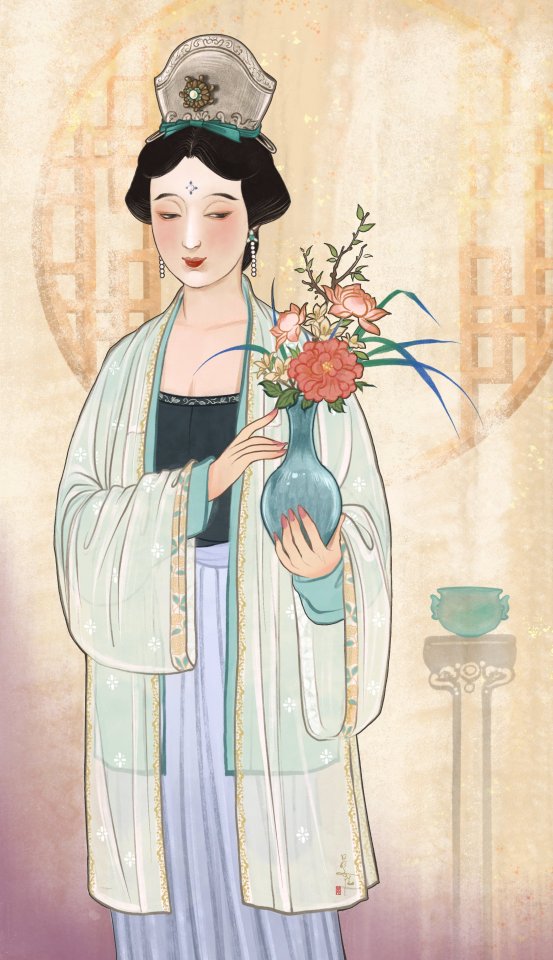

China Song Dynasty (960–1279) Painting<千里江山图/A Thousand Li of Rivers and Mountains>by 王希孟(Wang Ximeng)



China Yuan dynasty (1279–1368) Artifact Relics<霁蓝釉白龙纹梅瓶/Ji blue-glazed plum vase with white dragon pattern>

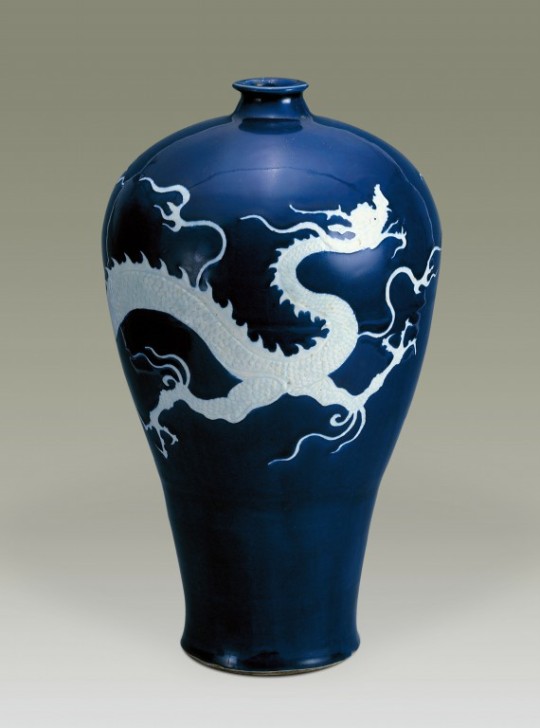
【Artist:陆曼陀 Social Media】
————————
Twitter:https://twitter.com/LuDanling
Weibo:https://weibo.com/u/2846691957
Post Source:https://weibo.com/2846691957/NzQ9IyzKL
————————
#chinese hanfu#陆曼陀#China history#chinese art#hanfu illustration#hanfu accessories#hanfu#hanfu history#china#chinese#history#chinese aesthetics#culture relic#汉服#漢服#heritage#civilization
427 notes
·
View notes
Text
"[There is] fantastic news for species conservation after new populations of the gorgeous ‘Skywalker’ gibbon, known to science for only 6 years, were recently found living in the politically chaotic nation of Myanmar.
Also called the hoolock gibbon, this dainty vocalist was first described in 2017 living in the extreme south of China on a mountain in Yunnan. Classified as Endangered by the IUCN, the population was estimated to number a paltry 150 individuals, but others were believed to live in Myanmar.
Even before the recent military junta usurped the president and plunged the country into civil war, Myanmar [was a difficult place to conduct field studies, especially extensive or ongoing ones, due to ongoing conflict.]
[Although they are] now in open revolt against the military junta, [the Myanmar states of Shan and Kachin] were nevertheless destinations for an intrepid team of scientists from the Nature Conservation Society Myanmar, Fauna & Flora International–Myanmar Programme, the IUCN’s ape specialist group, and field researchers from universities in England, China, and the US.
Together, they conducted acoustic surveys, collected non-invasive DNA sampling, and took photographs for morphological identification at six sites in Kachin State and three sites in Shan State. With the help of the Myanmar conservationists, the team also interviewed locals dwelling in rural forested areas, small conservation programs, and timber companies about the frequency of sightings and the hunting pressure.
Population estimates of unknown quality and scientific rigor conducted in 2013 suggested there might be 65,000 hoolock gibbons in Myanmar, but the matter became much more complicated after the classification of the Skywalker gibbon as a separate species from the eastern hoolock gibbon—where before they were confused as the same.
“We were able to genetically identify 44 new groups of Skywalker gibbons in Myanmar,” said senior author Tierra Smiley Evans, research faculty at the UC Davis School of Veterinary Medicine, and contributing author. “This is a huge resource and success story for Myanmar.”
These gibbons sing to each other at dawn for around 22 minutes, and consume 36 different plant species; choosing fruit first, and flowers later. They seldom sleep in the same tree two nights in a row to avoid predation, and can’t swim so are often confined to territories by river systems.
The team that discovered them in China in 2017 loved Star Wars, and called them tianxing which is Chinese pinyin for “heaven movement;” a nod not only to their favorite sci-fi franchise, but also to China’s ancient history. In the famous Book of Change [aka the I Ching] of the Zhou Dynasty [1046 BCE to 265 BCE], a divination poem refers to gibbons specifically, and uses tianxing as a verb to describe their movements.
The interviews were a source of great data for the scientists. For starters, nearly all individuals in both the Kachin and Shan states could identify a Skywalker gibbon by sight and by playback of its singing, lending the exercise a good degree of reliability...
“Biologists did not believe Skywalker gibbons could live in the small remaining patches in Southern Shan State before we started this project,” Pyae Phyo Aung, executive director of Nature Conservation Society Myanmar, told the UC Davis press.
“I am delighted with our field team members who have done an excellent job, within a short period of time, building community trust for further conservation actions. This area is degraded forest. It is really important for Myanmar and China to consider extending conservation approaches for the Skywalker gibbon to this new geographic area.”
Nearly 32,000 square kilometers, or around 8 million acres of forestland in Eastern Myanmar are suitable gibbon habitat, and while existing forest reserves like Paung Taung and Mae Nei Laung are quite large, they remain unprotected. For this reason, the survey team recommended they remain considered ‘Endangered’ on the IUCN Red List until habitat protections improve."
-via Good News Network, February 21, 2024
#gibbon#apes#primates#myanmar#endangered species#china#zoology#conservation biology#conservation news#primatology#good news#hope
148 notes
·
View notes
Text


Bronze wine vessel, China, Eastern Zhou Dynasty, 11th century BC
from The Shanghai Museum
675 notes
·
View notes
Text

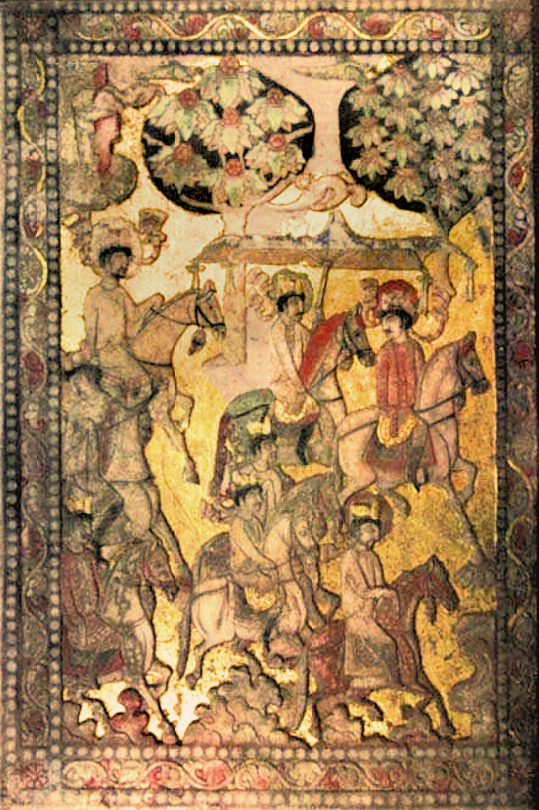
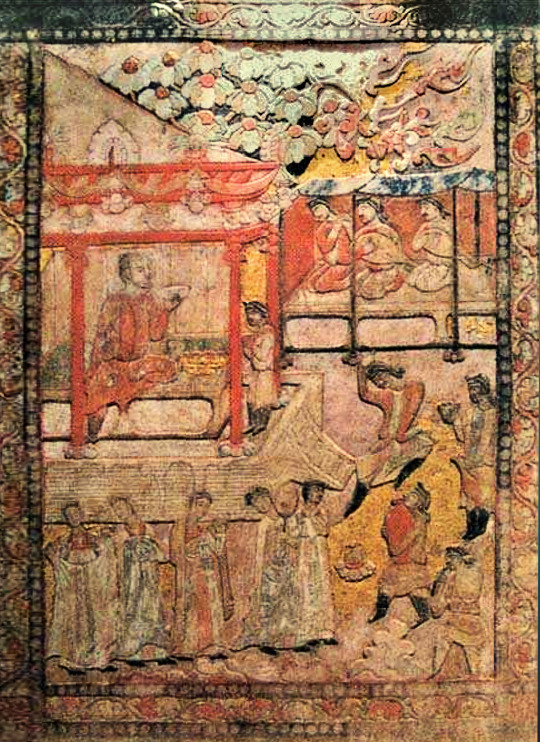


Tomb of An Bei 589 CE. Sogdian tomb.
I couldn't find the translation for the epitaph for this one.
"Differently from the other tombs quoted in this paper, Anbei’s tomb was not excavated by archaeologists, but found and looted by the robbers, therefore the archaeological context of this tomb, even the date of this accidental finding are lost. Until now, all we know is that this tomb robbery happened someday between 2006 and 2007. Several stone figurines, a funerary couch and Anbei’s epitaph stone were found in the tomb. Two stone figurines, parts of the base of the couch and the epitaph are now exhibited in the Tang West Market Museum in Xi’an (Fig.20), four panels belonging to the private owners, including two processing and two banqueting scenes, were published, too (Fig.21).
Although owning the typical Sogdian name An, which means his ancestors migrated into China from Bukhara, his homeland was described in a completely different name, the state of Anjuyeni, which was never recorded by any source before. An’s family moved to China during the Northern Wei dynasty, some of his family members once served in the Bureau of Tributaries. For the court, it’s also an usual way to adopt expatriate immigrants to work in the diplomatic system. Anbei’s father, An Zhishi, served as a middle-rank commanding officer among the honour guards of the court.
As a, likely, third generation immigrant, Anbei’s life depicted in the epitaph was very brief, too. Except for the usual eulogies commonly written in every epitaph, two main parts of his experience were emphasized: his mercantile ability and simple bureaucratic career. The one who wrote the text made a metaphor, assimilating Anbei with two famous ancient Chinese merchants, Baigui and Xiangao during the Eastern Zhou Period (approximately between 8th c. - 3rd c. BC); After that, Anbei’s only short official career as a very lower status clerk of the military headquarters of vassal leader Xuchang was recorded, probably happened in 575 AD when he was 20 years old. Soonafter the Northern Qi was replaced by Northern Zhou dynasty in 577 AD, Anbei returned home in Luoyang, the place where he died and was buried in 589 AD at the age of 34.
The motivation for me to list this robbed tomb here, together with the other tombs which have detailed background obtained through scientific archaeological excavation is, however, mainly not for its elaborate funerary couch, but because of his distinctive identity depicted in the epitaph. Prior to the discovery of Anbei’s tomb, the deceased of all five tombs which constituted the most important foundation of the studies of the foreign immigrants in early medieval China, namely the tombs of Lidan, Kangye, Anjia, Shijun and Yuhong, owned high-ranked official positions such as head of a prefecture or Sabao, which may result in a misconception that only aristocrats of the foreign immigrants could be buried with such elaborate funerary furniture. However, Anbei’s tomb provided an additional possibility about the status of the tomb occupant who used the stone funerary furniture. What is expressly shown in the epitaph, during his 34-year-long life, Anbei was just a very ordinary person, without any notable ancestry from homeland, neither held any high-ranked post, nor received anyone as a posthumous reward.
Except for the basic information above, there is also a remarkable narration during the introduction in the beginning of Anbei’s epitaph, which may reflect the collective mindset among most of the foreign immigrants in China and their efforts in social integration, ‘Although he is a foreigner, after a long life in China, there is no difference between him and the Chinese’.
-Yusheng Li, Study of tombs of Hu people in late 6th century northern China
201 notes
·
View notes
Text
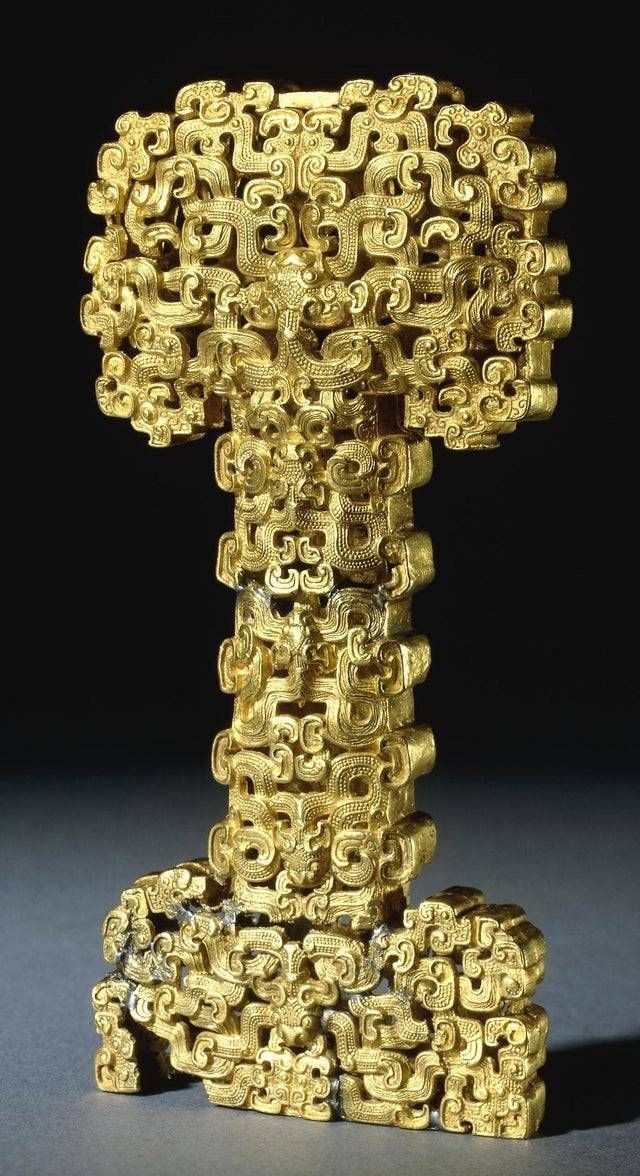
A gold sword hilt decorated with interlaced dragons. Eastern Zhou Dynasty. 5th-6th century BC.
26 notes
·
View notes
Text
Researchers have unveiled a riveting tale of aristocratic life and harsh justice during the Eastern Zhou dynasty, approximately 2,500 years ago. Unearthed in Henan Province, China, the skeletons of two middle-aged men, adorned with rich grave goods in ornate coffins, tell a story of high status intertwined with severe punishment. Despite losing parts of their legs to punitive amputation—a legal consequence for felonies during that era—these men continued to live lives of comfort, a testament to their elite status and the complexities of ancient Chinese legal practices.
20 notes
·
View notes
Text

Bronze sword, China, Eastern Zhou Dynasty 5th-3rd century BC
from Hermann Historica
211 notes
·
View notes
Text
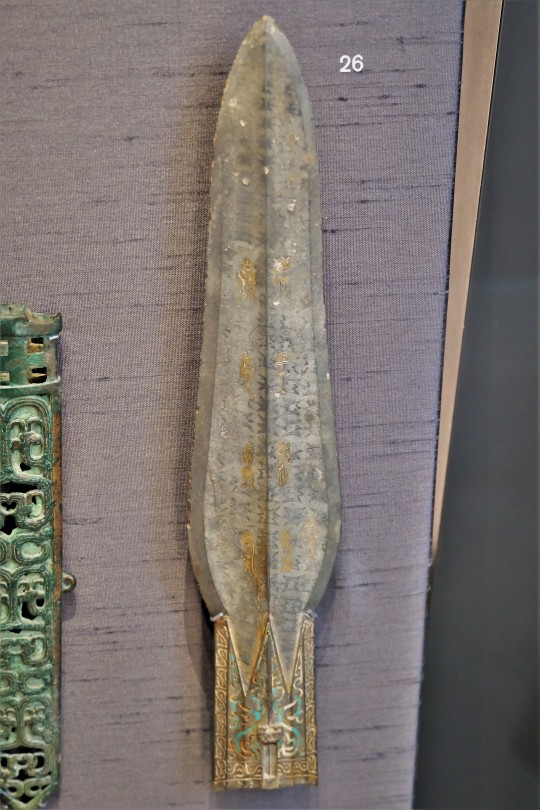
Spearhead from Zhejiang, China dated between 500-400 BCE on display at the British Museum in London, England
This spearhead is inlaid with an inscription, written in "Bird Script" a language to indicate ownership or date of completion and names the owner as King Zhu Gou of Yue (ruled between 448-412 BCE). The two most powerful stated in southeast China during the Spring and Autumn period (770-476 BCE), the Wu and the Yue were at war for years competing for supremacy.
There were numerous inter-state wars during the Eastern Zhou period (770-221 BCE) until all states were defeated by the Qin state, unifying China and forming the first i mperial dynasty.
Photographs taken by myself 2019
#archaeology#art#military history#ancient#china#chinese#bronze age#british museum#london#barbucomedie
69 notes
·
View notes
Photo



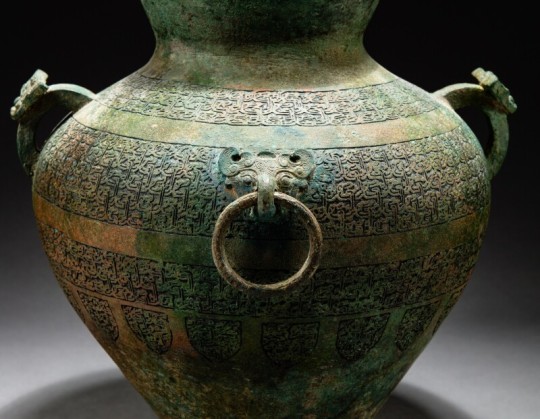
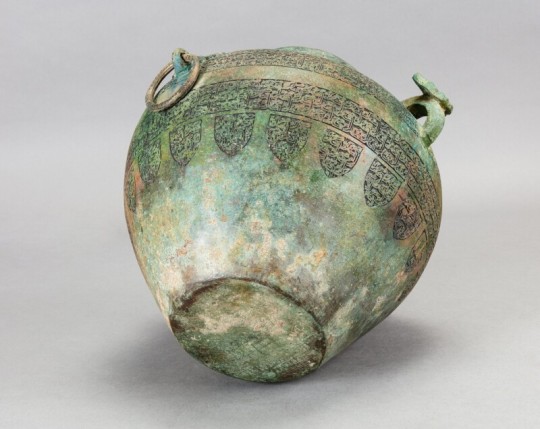
An archaic bronze wine vessel, lei
Eastern Zhou dynasty, Spring and Autumn period
H. 25 cm, 9 7/8 in. ; L. 29 cm, 11 3/8 in.
#An archaic bronze wine vessel lei#Eastern Zhou dynasty Spring and Autumn period#bronze#bronze vessel#archeology#archeolgst#ancient artifacts#history#history news#ancient history#ancient culture#ancient civilizations#ancient china
15 notes
·
View notes
Text

“Bronze basin with little animals that spin when filled with water. China, Eastern Zhou dynasty, 697–628 BC”
17 notes
·
View notes
Text
[Hanfu · 漢服]Chinese immortal Hanfu <西王母/Queen Mother of the West> Based On Yuan Dynasty Taoist Temple Mural<永乐宫/Yongle Palace>
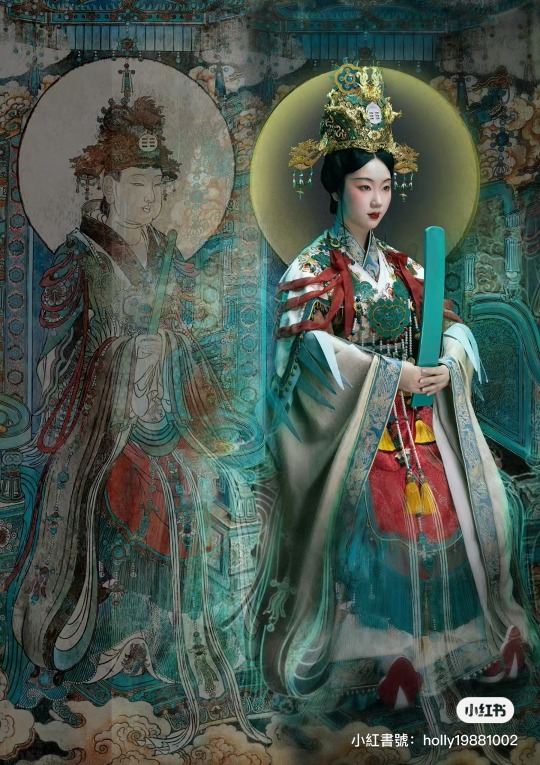
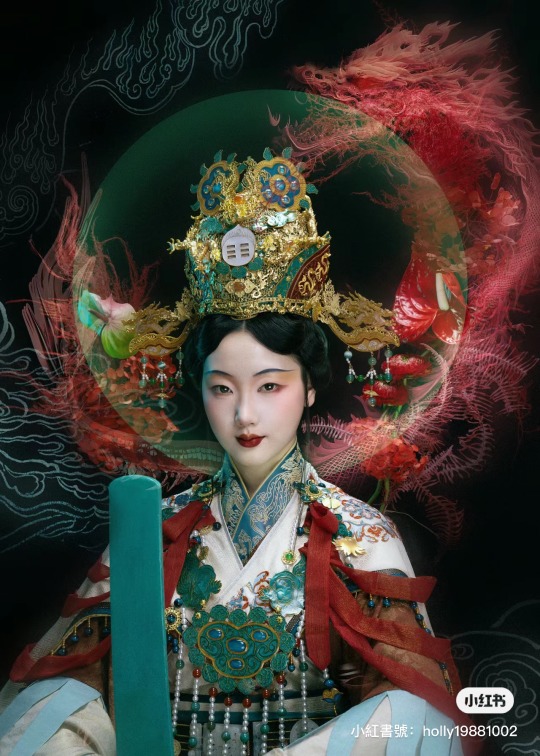
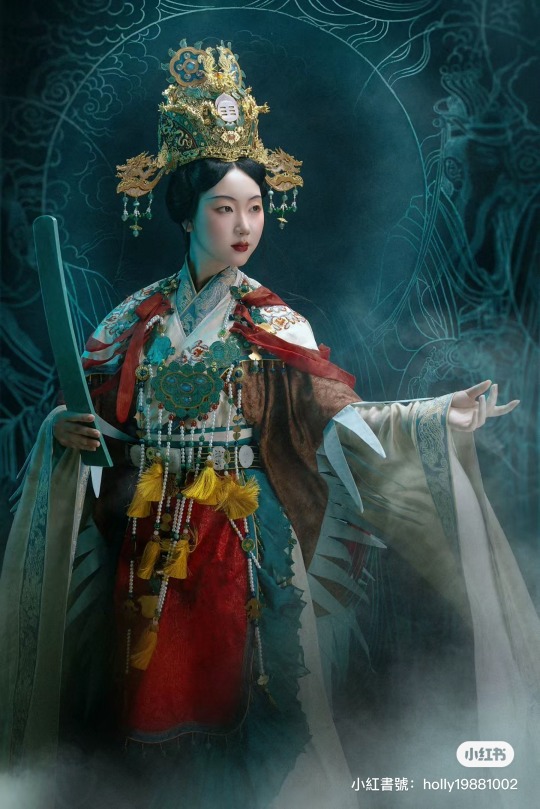
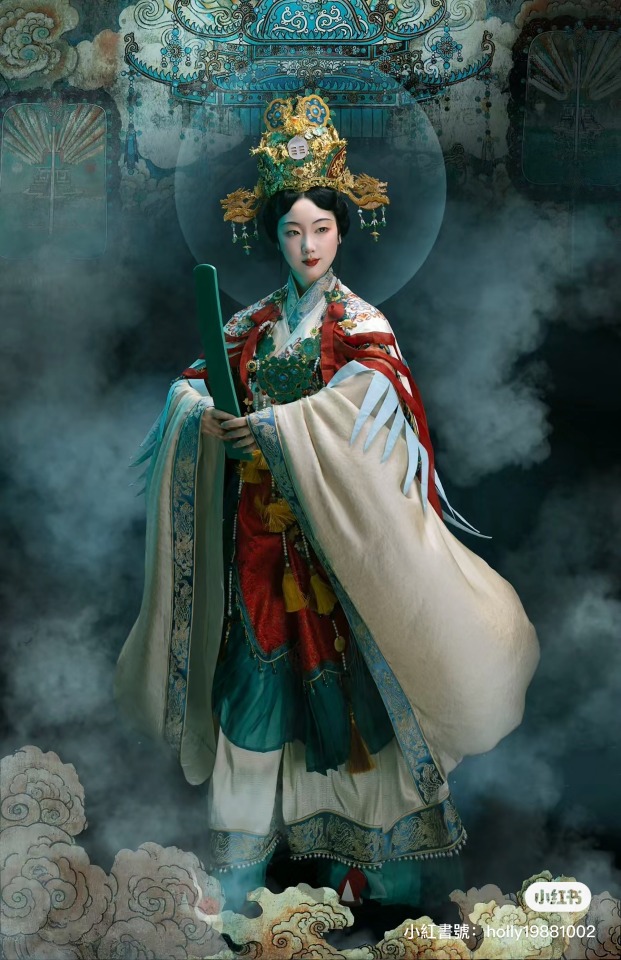
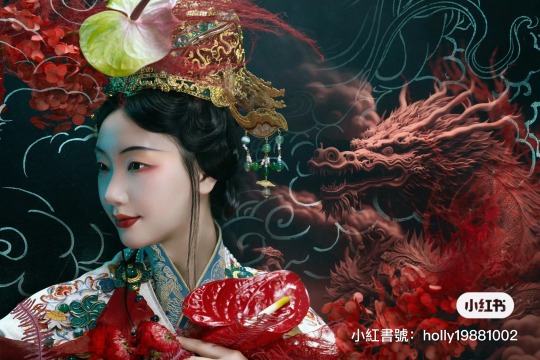
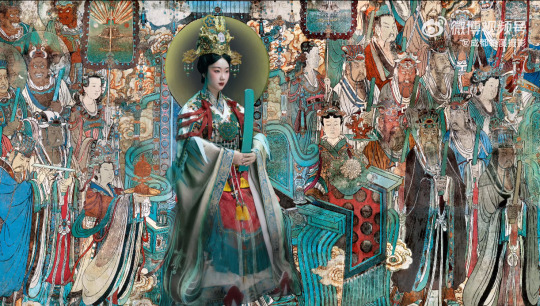
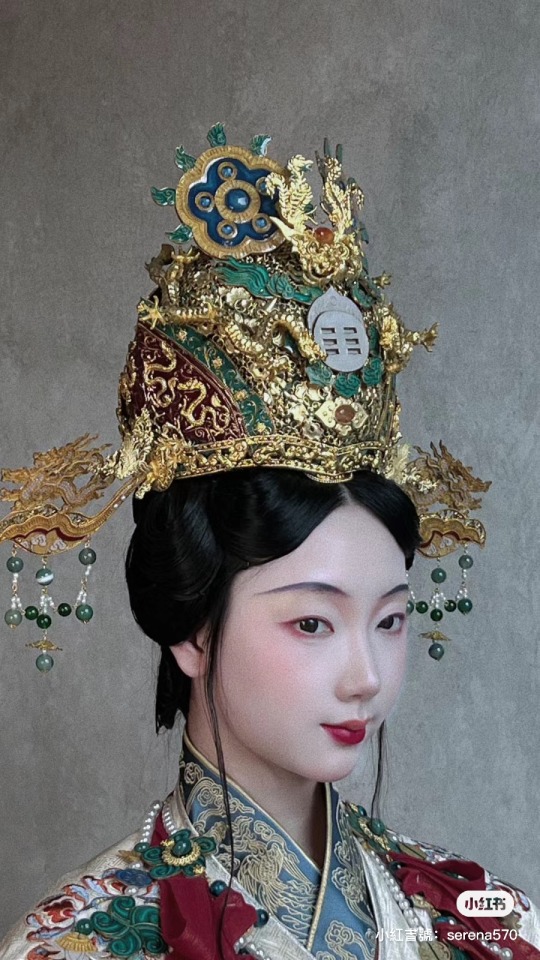
【Historical Artifacts Reference 】:
▶ China Yuan Dynasty Taoist Temple 永乐宫/Yongle Palace Mural


<西王母/Queen Mother of the West>
The Queen Mother of the West, known by various local names, is a mother goddess in Chinese religion and mythology, also worshipped in neighbouring Asian countries, and attested from ancient times.
The first mentions of the Queen Mother date back to the oracle bone inscriptions of the Shang dynasty (1766 – 1122 BCE).
One inscription reads:
Crack-making on day IX (9th day), we divined. If we make offering to the eastern mother and the western mother, there will be approval.
Western Mother refers to an archaic divinity residing in the west. The exact nature of the Mother divinities in the Shang dynasty is unclear, but they were seen as powerful forces deserving of ritual by the people of the Shang dynasty.
Originally, from the earliest known depictions of her in accounts like the Classic of Mountains and Seas during the Zhou dynasty, she was a ferocious goddess of death with the teeth of a tiger, who rules over wild beasts and sends down heavenly punishments such as pestilences. She was also mentioned as an authority ruling over other divinities such as Jiutian Xuannü, a goddess of war and sex.
Other stories hold that she is a mountain goddess or a divine tigress. She is also popularly thought to have blessed the Eight Immortals with their supernatural abilities.
After her integration into the Taoist pantheon, she gradually took on associations with other aspects, such as immortality, as well.
The Queen Mother of the West is most often depicted holding court within her palace on the mythological Mount Kunlun, usually supposed to be in western China (a modern Mount Kunlun is named after this). Her palace is believed to be a perfect and complete paradise, where it was used as a meeting place for the deities and a cosmic pillar where communications between deities and humans were possible.At her palace she was surrounded by a female retinue of prominent goddesses and spiritual attendants. One of her symbols is the Big Dipper.
Although not definite there are many beliefs that her garden had a special orchard of longevity peaches which would ripen once every three thousand years,others believe though that her court on Mount Kunlun was nearby to the orchard of the Peaches of Immortality. No matter where the peaches were located, the Queen Mother of the West is widely known for serving peaches to her guests, which would then make them immortal. She normally wears a distinctive headdress with the Peaches of Immortality suspended from it.
Flourishing parasols, we reach the chronograms' extremity;
Riding on the mist, I wander to Lofty Whirlwind Peak.
The Lady of the Supreme Primordial descends through jade interior doors;
The Queen Mother opens her Blue-gem Palace.
Celestial people—What a Crowd!
A lofty meeting inside the Cyan Audience Hall.
Arrayed Attendants perform Cloud Songs;
Realized intonations fill the Grand Empty Space.
Every thousand years, her purple crabapple ripens;
Every four kalpas, her numinous melon produces abundantly.
This music differs from that at the feast in the wilderness—
So convivial, and certainly infinite.— Wu Yun (Complete Tang Poems 1967, line 4942)
One of the earliest written references to the Queen Mother comes from the writings of the Taoist writer Zhuangzi (c. 4th century BCE):
The Queen Mother of the West obtained it [the Dao]... ...and took up her seat at Shao kuang. No one knows her beginning; no one knows her end.
Zhuangzi describes the Queen Mother as one of the highest of the deities, meaning she had gained immortality and celestial powers. Zhuangzi also states that Xiwangmu is seated upon a spiritual western mountain range, suggesting she is connected to not only the heavens, but also to the west.
Legendary encounters
In Tu Kuang-ting's text, he includes narrative accounts of the Queen Mother's encounters with legendary Chinese heroes. One such account narrates an encounter between the Queen Mother and Laozi (Lord Lao):
"In the 25th year of King Chao of the Chou dynasty (1028 BCE) …"
"…Lord Lao and the realized person Yin Hsi went traveling…"
"…on their behalf, the Queen Mother of the West explicated the Scripture of Constant Purity and Quiet."
In this account, the Queen Mother plays the role of Laozi's superior and is credited with the ultimate authorship of the Dao De Jing. This dichotomy of the Queen Mother as the superior is a characteristic of Shangqing Taoism, a goddess worshiping sect of Taoism of which Tu Kuang-ting was a master. There is also an account of a meeting between the Queen Mother and Laozi in Tang poetry.[18] This account however, being of traditional Taoist thought, has the Queen Mother taking an inferior role to Laozi, calling him "Primordial Lord" (the title of his highest manifestation) and pays homage to the sage.

<China Han Dynasty stone-relief showing 西王母/Queen Mother of the West from Sichuan,China>

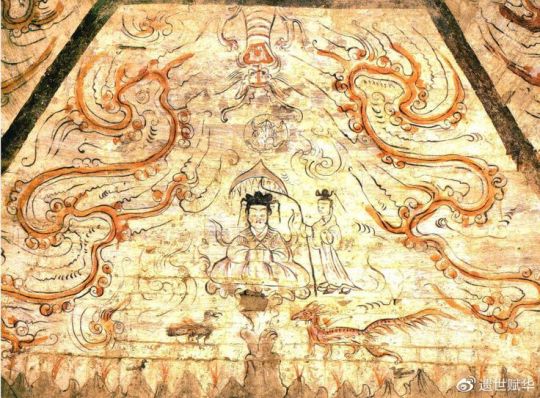
<China Wei and Jin Dynasties Mural showing 西王母/Queen Mother of the West>
————————
📸Photography post-production :@小何力
👗Hanfu & 👑Crown:@雁鸿Aimee
💄 Makeup:百丽 (临溪摄影)
👭Model:@清音音音音
🔗 Weibo:https://weibo.com/1648616372/O2R5bpBud
————————
#chinese hanfu#immortal hanfu#西王母/Queen Mother of the West#Chinese mythology#hanfu#hanfu accessories#hanfu_challenge#chinese traditional clothing#china#chinese#chinese history#china history#漢服#汉服#中華風#小何力#雁鸿Aimee#永乐宫/Yongle Palace
228 notes
·
View notes
Note
sorry to bother, but I've got a question that's been bugging me for a little while. In chapter one of Anthony C. Yu Translation, it states the monkey kings birth rock as an 'immortal stone' then goes on to describe its size. how could a stone be immortal, or is a just a way to say it was favored by the heavens?
I'm not sure, but I've always considered it to be a kind of "scholar's rock" (gongshi, 供石), a category of gnarled, pitted stones that develop in nature. They are often seen in Chinese gardens. The rocks were historically viewed as stand-ins for qi (氣)-filled mountains far away from the cities and towns where scholar-cultivators lived. I wrote the following in an old college research paper:
It’s important to point out that the very first reference to Chinese gardens appears in the Book of Changes. The aforementioned material also states that “Grace [can be found] in the hills and gardens” (賁于丘園). Here, gardens are associated with the wilderness and not a plot in a private residence. The first unambiguous mention of gardens comes from the Songs of Chu (楚辭, Chu Ci, 4th-c. BCE), an anthology of poetry written during the latter part of the Zhou Dynasty. One famous verse known as “Summoning the Soul” (招魂, Zhao Hun) describes how a shaman (巫, Wu) struggles to entice the meandering spirit of an ailing king to return by reminding him of the beautiful women waiting for him “in your garden pavilion, by the long bed curtains”.[7] Such imperial gardens took on a new significance during the following Qin (221–206 BCE) and Han dynasties (206 BCE–220 CE) as certain emperors became obsessed with Daoist immortality and built microcosms of landscapes—rocks for mountains, ponds for rivers, and trees and plants for forests—within their palaces. The hope was to entice lofty immortals to settle there and teach them their secrets of longevity.
The first private pleasure gardens arose during the Han. There were two kinds, the extravagant park owned by the wealthy and the simple scholar’s retreat. The former was based on the great imperial hunting parks that served as a symbol for the emperor’s power since such spaces were stocked with exotic plants and animals gifted by conquered territories. Thus, the extravagant nature of these gardens served to broadcast the wealth and power of their owners. On the contrary, the latter were most likely born from privately owned vegetable gardens. The Book of Odes (詩經, 11th–7th-c. BCE), the oldest known collection of Chinese poetry, suggests that scholars during the Zhou dynasty already viewed their simple food gardens as relaxing places of leisure. The idea of a garden serving as a proxy for a mountain retreat was made popular by Tao Qian (陶潛, 365–427), a poet of the Six Dynasties period (220–589). His philosophy is best exemplified by poem number five of his “Twenty Poems After Drinking Wine” series:
I built my hut beside a traveled road
Yet hear no noise of passing carts and horses.
You would like to know how it is done?
With the mind detached, one’s place becomes remote.
Picking chrysanthemums by the eastern hedge
I catch sight of the distant southern hills:
The mountain air is lovely as the sun sets
And flocks of flying birds return together.
In these things is a fundamental truth
I would like to tell, but lack the words.
Here, shear concentration of will transports an individual to the mountains far away from the hustle and bustle of daily life. This implies that any setting can be one’s own personal Eden, even a garden.

#immortal stone#Chinese garden#scholar rock#microcosm#qi energy#meditation#spirituality#spiritual cultivation#Sun Wukong#Monkey King#Journey to the West#JTTW#Lego Monkie Kid#LMK
21 notes
·
View notes